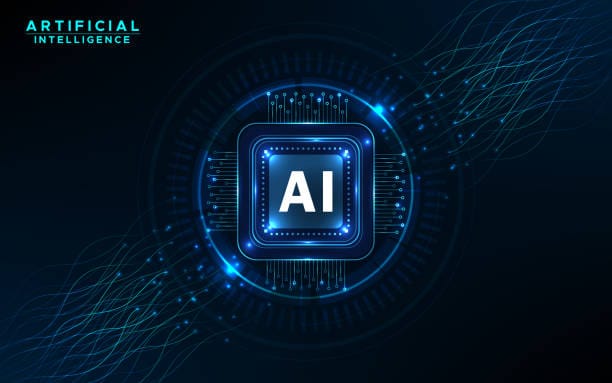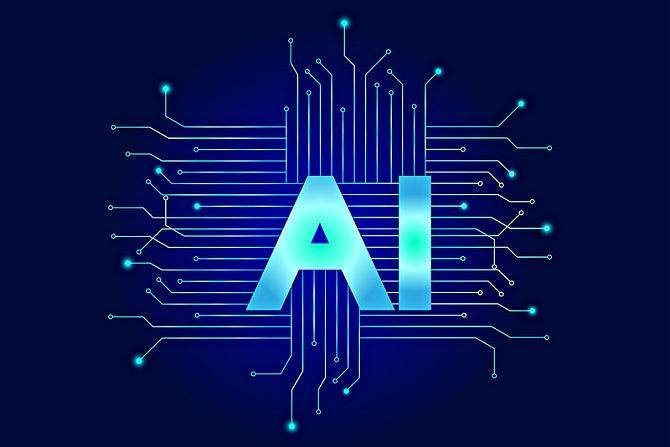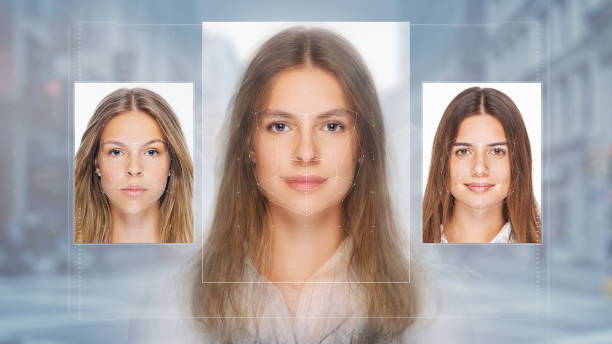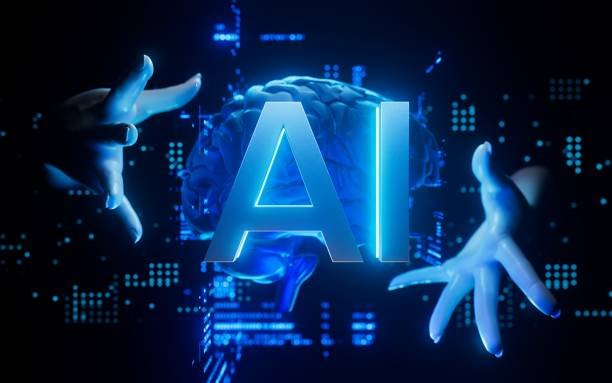In the arc of human history, there are moments that feel like the cracking of a new dawn. The wheel, the printing press, the steam engine, electricity—these weren’t just tools; they were ideas that multiplied all other ideas. And today, perhaps more quietly but just as powerfully, we are in the presence of another one. A machine that learns. A machine that doesn’t just do what it’s told, but watches, adapts, and evolves.
This is not science fiction. It is the machinery behind your Spotify recommendations, your Google searches, your voice assistants, your fraud alerts, and the systems predicting global weather, decoding genomes, diagnosing diseases, and guiding self-driving cars through traffic. It is not just one field. It is the nervous system of the digital age.
To understand machine learning is not to memorize equations or recite technical terms. It is to see how intelligence is unfolding into code. It is to glimpse how data becomes prediction, how uncertainty becomes insight, and how models—abstractions crafted by humans—can sometimes teach us more about reality than we knew how to ask.
Learning from Data: Why the Past Powers the Future
At its core, machine learning is about using the past to predict the future. It is about feeding machines data—massive, unrelenting, complicated rivers of data—and asking them to find patterns we cannot see.
The magic lies in generalization. A machine is trained on examples, not instructions. It sees emails and learns to distinguish spam from important messages. It watches transactions and learns to detect fraud. It digests thousands of chest X-rays and begins to see tumors long before a human eye could.
This is not rote memorization. A child who touches a hot stove once learns to be careful around stoves in general. Machine learning, when done right, is the same. It learns rules from examples. It finds the structure beneath the noise. But unlike humans, it can sift through billions of examples in milliseconds, and sometimes find rules that no human ever considered.
And when it makes a mistake? It learns. It adjusts. Like a mind.
Features: The Eyes of the Model
Before a model can understand anything, it needs to see the world in terms it can process. Raw data is rarely usable in its natural form. A picture is just a grid of pixels. A sentence is a series of characters. A transaction is a database row full of numbers, dates, and codes.
So we translate. We distill reality into features. Features are the language of learning. They are the dimensions of understanding.
For a house price prediction model, a feature might be square footage, number of bedrooms, or distance from the nearest school. For a speech recognition model, features might be frequencies of sound, pitch, and rhythm.
But here’s the art: choosing the right features is often more important than choosing the algorithm. The way you frame reality determines how the model will understand it. A machine learning model is a student—and features are the lens through which it sees.
Crafting good features is part science, part intuition. It requires domain knowledge, creativity, and a sense of what matters. In some sense, every machine learning project is a philosophical one: what parts of the world are important? What do we keep, and what do we throw away?
The Model: A Dream Shaped by Data
The model is the heart of machine learning. It is not a single thing, but a structure—a function—that takes inputs (features) and produces outputs (predictions). It could be a straight line. It could be a deep neural network with millions of parameters. It could be a decision tree, a random forest, or a support vector machine. But whatever form it takes, it exists to capture a relationship between cause and effect, between signal and noise.
Training a model means adjusting it until its predictions match the data it sees. It’s like fitting a glove to a hand—adjusting the shape of the model so it hugs the curves of the real world. If the fit is too loose, it misses the patterns. If it’s too tight, it memorizes the data instead of learning from it.
This dance between underfitting and overfitting is one of the great balancing acts in machine learning. A good model doesn’t just perform well on data it’s seen—it performs well on data it hasn’t. It doesn’t just memorize the past; it generalizes to the future.
And this is where machine learning becomes a mirror of the human mind. The same way we build beliefs from experience, test them, and revise them, a model learns by being wrong—and trying again.
Loss and Optimization: The Pain That Leads to Growth
Every model makes mistakes. It predicts a cat when it sees a dog. It flags a normal email as spam. These errors are not failures. They are feedback.
In machine learning, the cost of being wrong is captured in a function called loss. Loss is a number—a measure of how far off the model’s predictions are from reality. The higher the loss, the worse the performance.
Optimization is the art of minimizing that loss. It is how models grow. Using algorithms like gradient descent, the model takes small steps in the direction that reduces its errors. Each step updates the parameters of the model—tiny numerical changes that accumulate into better performance.
This is not unlike how humans learn. We try something, we fail, we feel discomfort, and we adjust. In both cases, pain is not the enemy—it is the guide.
Supervised Learning: Teaching by Example
One of the most intuitive forms of machine learning is supervised learning. Here, the model is trained on labeled data—examples where the correct answer is known.
It’s like teaching a child with flashcards. “This is a dog. This is a cat. This is a banana.” The model sees inputs and their corresponding outputs, and its task is to learn the mapping between them.
Supervised learning is the engine behind image classification, sentiment analysis, price prediction, and countless other applications. It thrives in environments where we can collect data with known answers.
But it has limitations. It needs labels. And in the real world, labels are often expensive, ambiguous, or simply unavailable.
Still, when the data is clean and the answers clear, supervised learning is one of the most powerful ways to extract structure from the world.
Unsupervised Learning: Discovering the Unknown
What happens when we don’t have labels? When we don’t know the answer ahead of time?
Unsupervised learning is the art of discovering structure in unlabeled data. It finds clusters, anomalies, and patterns that were never explicitly marked.
Imagine giving a model a million customer records and asking it to group them based on behavior. Or feeding it documents and asking it to find the hidden topics. This is not about prediction—it’s about exploration. Discovery. Compression.
Unsupervised learning mirrors how humans often think. We don’t always know the categories in advance. Sometimes we wander, observe, and let the patterns emerge. In this way, unsupervised learning is a form of digital curiosity.
Reinforcement Learning: Learning by Trial and Triumph
In supervised learning, the model is told the answer. In unsupervised learning, it isn’t. But in reinforcement learning, the model learns by doing.
This is the domain of agents and environments. The agent takes actions. The environment responds with rewards or penalties. Over time, the agent learns which actions maximize reward. It is a loop of interaction, reflection, and strategy.
Reinforcement learning is how AlphaGo beat world champions. It’s how robots learn to walk. It’s how game-playing AIs become masters of complex strategy.
It is also perhaps the most human of learning styles. We explore, we fail, we try again. We learn not just what is, but what works.
Overfitting and Generalization: The Shadow Side of Intelligence
There is a paradox in learning: the more closely a model fits its training data, the worse it might perform on new data.
Overfitting is the machine learning version of tunnel vision. A model becomes so obsessed with the details of its training data that it loses the bigger picture. It memorizes instead of learning.
Imagine a student who recites every line from a textbook but fails the test because the questions are slightly different. The student studied too narrowly. The same can happen to models.
Generalization is the cure. A good model doesn’t just match the past—it anticipates the future. Achieving this balance requires techniques like regularization, cross-validation, and keeping the model’s complexity in check.
In life and in learning, there is a truth: to truly understand, we must let go of some details. We must see the forest, not just the trees.
Bias and Variance: The Tug of War in Every Prediction
Beneath the surface of every machine learning model lives a delicate battle between two forces: bias and variance. These aren’t just mathematical concepts—they are ways of understanding error, insight, and the limits of knowledge itself.
Bias is the model’s assumptions. It’s the simplifications it makes to understand the world. A high-bias model might assume that relationships are always linear, or that small features don’t matter. Such models are efficient, fast, but often wrong—they underfit the data.
Variance, on the other hand, is the model’s sensitivity to noise. A high-variance model remembers every detail of the training data, even the accidental quirks. It might perform perfectly on past examples but fail disastrously on new ones—it overfits.
The magic lies in the balance. Too much bias, and the model is blind. Too much variance, and the model is paranoid. Like tuning a musical instrument, the goal is not perfection, but harmony. The bias-variance trade-off teaches us that knowledge is always approximate, always conditional—and always evolving.
Training, Testing, and the Honest Mirror
To measure what a model has learned, you must test it on data it has never seen. Without this, you are simply echoing the past.
In machine learning, data is often split into three sets: training, validation, and testing. The training set is where learning happens. The validation set helps tweak the model’s settings. And the test set is the final judge—a mirror that reveals whether the model has truly understood the world or just memorized it.
Cross-validation goes further. It slices the data into multiple segments and rotates them through the training and testing process, reducing randomness and revealing more stable performance.
These practices aren’t just procedural—they’re philosophical. They represent the pursuit of truth through self-restraint. The model must be challenged, questioned, and tested outside its comfort zone. That’s not just how machines learn. It’s how we all do.
Neural Networks: The Digital Brain Awakens
One of the most profound ideas in machine learning is that of the neural network—a model inspired by the structure of the human brain. It is not biology. It is abstraction. But it works.
Neural networks consist of layers of interconnected nodes, or “neurons,” that transform inputs into outputs through weighted connections and activation functions. Each layer extracts progressively higher-level features, learning to represent complexity from simplicity.
Feed a neural network an image of a face, and it will first detect edges, then shapes, then eyes, noses, and expressions. Layer by layer, it builds understanding.
Deep learning takes this further. With dozens or even hundreds of layers, deep neural networks can tackle speech, language, vision, and more with unprecedented power. They are behind voice assistants, facial recognition, automatic translation, and self-driving cars.
But they are not magic. They require vast amounts of data, careful tuning, and powerful hardware. And while they can imitate intelligence, they do not yet understand.
Still, there is something profound here. A system that learns not through explicit rules, but through experience. A machine that grows wiser with every mistake. In neural networks, we see a mirror of ourselves—imperfect, evolving, and endlessly curious.
Backpropagation: Learning by Correction
How does a neural network learn? Through a process both simple and elegant: backpropagation.
It starts with a guess—a prediction. The model compares that prediction to the truth and measures the error using a loss function. Then, working backwards through the layers, it calculates how each weight contributed to the error. These weights are then adjusted slightly in the direction that would have made the prediction better.
This process repeats thousands or millions of times, gradually sculpting the model into something accurate, resilient, and capable.
Backpropagation is not unlike introspection. It is a system asking itself: “Where did I go wrong?” and then acting on the answer.
Activation Functions: Igniting Non-Linearity
A critical part of neural networks is the activation function—the switch that determines whether a neuron fires or not. Without it, the network would be no more powerful than a simple linear equation.
Activation functions like ReLU, sigmoid, and tanh inject non-linearity into the network, allowing it to model complex relationships. They determine how signals flow, how patterns are formed, and how abstractions are built.
In biological terms, they are the difference between a spark and silence. In machine learning, they are the gateway between understanding and confusion. Choosing the right activation function can mean the difference between a model that learns and one that flounders.
Regularization: Guarding Against Overconfidence
In the pursuit of learning, models can become overzealous. They may latch onto small patterns that don’t generalize, leading to overfitting.
Regularization is the solution. It penalizes complexity, encourages simplicity, and prevents the model from becoming too sure of itself. Techniques like L1 and L2 regularization add a cost to large weights, forcing the model to focus on the most important signals.
Dropout, another regularization technique, randomly disables parts of the network during training, forcing the remaining neurons to pick up the slack. The result is a more robust, less fragile model.
Regularization is the humility of machine learning. It reminds the model that certainty is dangerous and that sometimes, less is more.
Ensemble Methods: Wisdom of the Crowd
Sometimes, one model isn’t enough. A single learner might make biased decisions or miss subtle cues. But many models—combined in the right way—can outperform the best individual.
Ensemble methods like bagging, boosting, and stacking harness the power of multiple models. They average their predictions, vote on outcomes, or layer decisions in sophisticated ways.
Random forests, for instance, grow many decision trees and average their predictions to reduce variance. Gradient boosting builds models sequentially, each one correcting the mistakes of the last.
These methods are not just clever—they’re a reflection of collective intelligence. Like juries, committees, and teams, ensembles perform best when their members are diverse and independent.
In machine learning, as in life, sometimes the many are wiser than the one.
Transfer Learning: Standing on the Shoulders of Giants
Training a model from scratch can be expensive, slow, and data-hungry. But what if a model trained for one task could help with another?
That’s the promise of transfer learning. It allows a model trained on one domain—like recognizing objects in images—to be repurposed for another—like detecting disease in X-rays.
In natural language processing, models like BERT, GPT, and T5 are pre-trained on massive corpora and then fine-tuned for specific tasks. This reuse saves time, improves performance, and democratizes access to cutting-edge models.
Transfer learning is a beautiful idea: that knowledge is not isolated, but transferable. That learning in one domain can illuminate another. It mirrors the human ability to apply old wisdom to new challenges.
Explainability: Making the Black Box Transparent
As machine learning models grow more complex, they often become less interpretable. A deep neural network might predict cancer with high accuracy—but why? What features did it rely on? How confident is it?
This is the problem of the black box—a model that works but cannot be explained.
Explainability is the field that tries to open that box. It uses tools like SHAP values, LIME, and saliency maps to trace predictions back to their causes. It asks, “What part of the image led to this classification?” or “Which words triggered this sentiment?”
In domains like healthcare, finance, and criminal justice, explainability is not optional—it is ethical. Decisions that affect lives must be transparent.
A model that cannot explain itself is not trustworthy. In opening the black box, we are not just making machines accountable—we are making them human.
Ethics and Fairness: Learning with a Conscience
Machine learning is not neutral. It reflects the data it is given—and that data reflects our world, with all its biases, injustices, and blind spots.
If a hiring algorithm is trained on past hiring decisions, and those decisions favored one demographic, the model will learn to do the same. If a facial recognition system is trained mostly on light-skinned faces, it may misidentify dark-skinned individuals.
These are not just technical flaws. They are moral failures. They demand more than better models—they demand better values.
Fairness in machine learning means designing systems that do not discriminate, that are transparent about their limits, and that are accountable for their actions. It means including diverse voices, auditing outcomes, and acknowledging that data is never just data—it is people.
The future of machine learning will be shaped not just by algorithms, but by ethics. By the choice to use this power wisely, justly, and with empathy.
The Road Ahead: Intelligence as a Journey
Machine learning is not finished. It is not perfect. It is not even well understood, in many ways.
But it is moving—fast, powerful, and everywhere.
New paradigms like self-supervised learning, federated learning, and continual learning promise to push the boundaries even further. Quantum machine learning could rewrite the rules entirely. And artificial general intelligence—the holy grail—remains on the horizon, shimmering with possibility and peril.
But wherever the road leads, the concepts explored here—data, features, models, loss, learning, generalization, fairness—will remain the foundation.
They are not just the pillars of a discipline. They are a new language for understanding the world. A way to build systems that see, hear, and decide. A way to create tools that help us know more, do more, and be more.
Machine learning is not about replacing human intelligence. It is about expanding it. Amplifying it. Giving it new form.
Final Thoughts: Teaching the Machine, and Ourselves
To study machine learning is to study learning itself. Not just how machines learn, but how we do. Not just how to make predictions, but how to seek truth.
It is a field full of numbers, yes—but beneath those numbers are questions that are philosophical, moral, and deeply human.
How do we know what we know? What does it mean to generalize? How do we separate signal from noise? How do we measure success? What do we do with uncertainty? And most of all: What kind of intelligence do we want to build?
The answers are still unfolding. The models are still learning. So are we.
But one thing is clear: in teaching machines to learn, we are learning more about ourselves—about what it means to perceive, to adapt, to grow, and to imagine a better future.
A future not ruled by machines, but illuminated by them.






